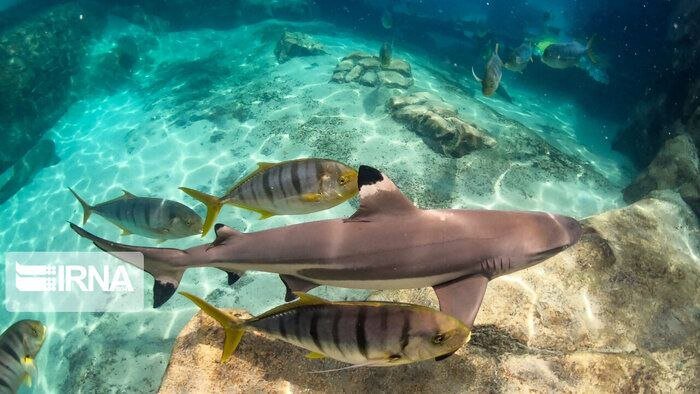DOE developing action plan for conservation of sharks, rays

TEHRAN – The Department of Environment (DOE) is drafting an action plan for the preservation of sharks and rays.
“It is a national document, and its implementation will be mandatory for the related organizations,” IRNA quoted Shahram Fadakar, an official with the DOE, as saying.
Referring to the key role of cartilaginous fish in marine ecosystems, Fadakar said sharks and rays sit at the top of the ocean food web; they play a vital role in maintaining biological balance. The decline in the population of sharks and rays impacts the survival of marine communities.
Unfortunately, overexploitation and illegal fishing, their late maturity, and low breeding have threatened these species with extinction.
More than a third of cartilaginous fish species are on the International Union for Conservation of Nature (IUCN) Red List; among them, rays are critically endangered.
Adopting a participatory approach, the action plan aims to identify threats, reduce conflicts, promote preservation culture, and determine priority actions for a five-year period, the official stressed.
Fadakar went on to say the DOE has so far conducted 48 educational and participatory workshops in coastal provinces.
The latest workshop was held with the participation of representatives from Iran Fisheries Organization, the Ministry of Industry, Mining and Trade, Iran’s Customs Administration, and the National Planning and Budget Organization, to strengthen collaborations among these institutions.
Rays or skates are an order of cartilaginous fish that includes various types of rays, skates, and some other similar fish. They mostly feed on smaller fish, invertebrates, and benthic organisms, searching for food at the bottom of the seas, and with their mouth located on the underside of their bodies, they easily catch the prey and eat them.
Overfishing, marine pollution, and habitat loss are among their main threats. Conservation efforts include restricting hunting and protecting their habitat.
Sharks are a large group of cartilaginous fish, half of which are listed in the IUCN Red List as endangered species. There are 7 types of sharks in the Persian Gulf, including the basking shark, the basking shark, the whale shark, the thresher shark, the bull shark, the shark catfish, and the zebra shark. Four species of sharks in the Persian Gulf and the Sea of Oman are now critically endangered, and 13 species are on the IUCN Red List.
Overfishing, inappropriate fishing methods, and habitat loss are among the factors responsible for the extinction of sharks in the Persian Gulf.
Action plans to conserve species
The DOE has developed action plans for the conservation of 23 endangered species and the plans are being implemented in the country.
The plans intend to address species such as cheetah, brown bear, leopard, black bear, Persian yellow deer, Persian zebra, and hunting birds from among 86 endangered species.
According to the DOE’s latest report, 86 species in the country are in danger of dying out.
The Department of Environment is planning to create action plans for 20 more endangered species.
MT/MG
Leave a Comment